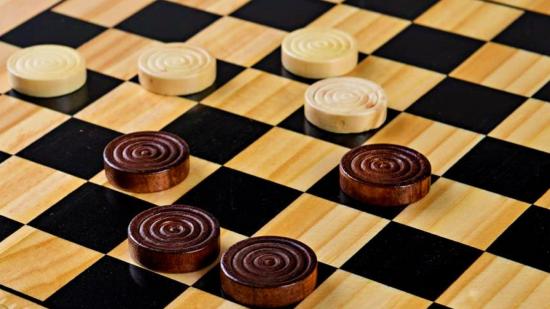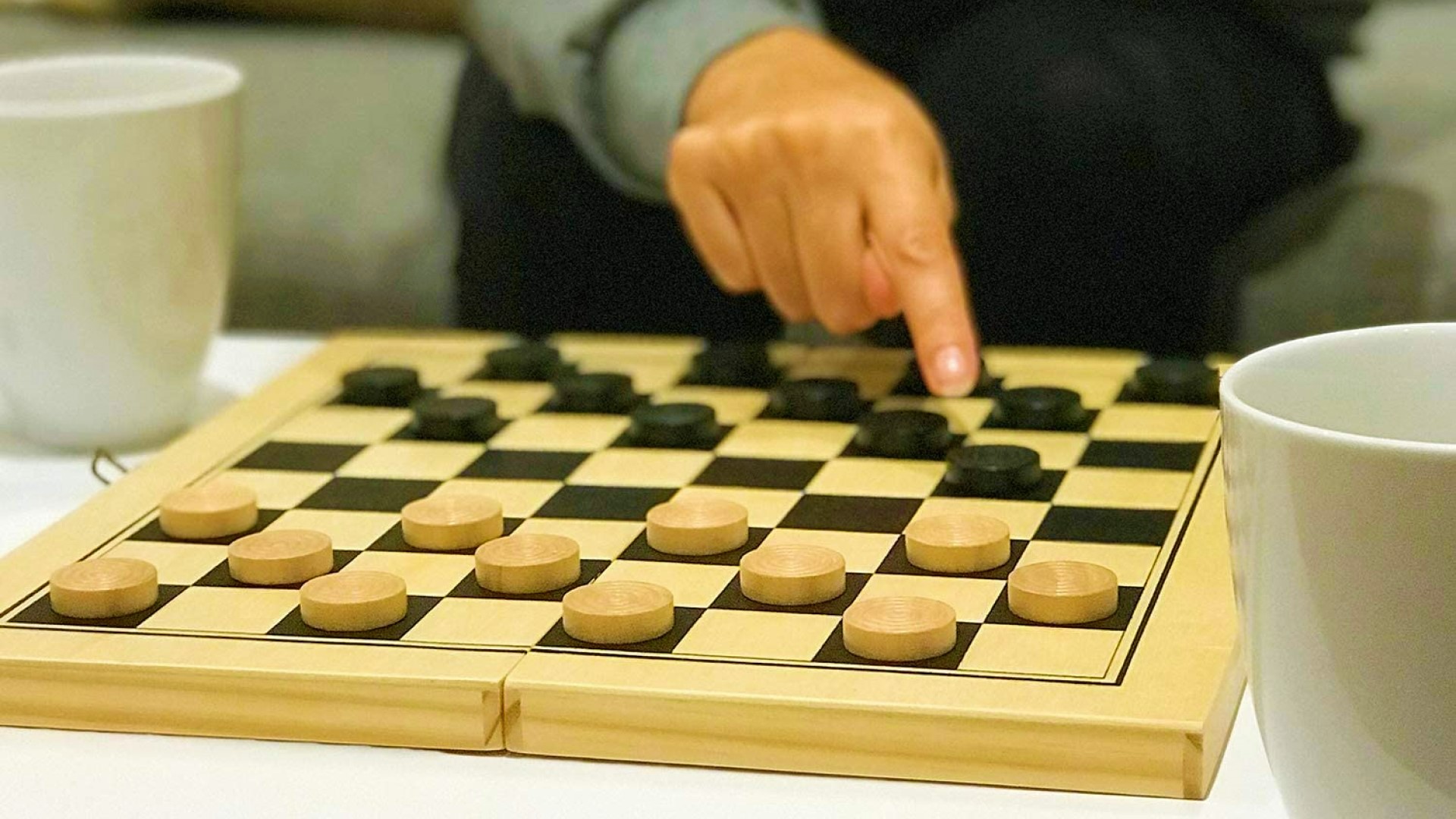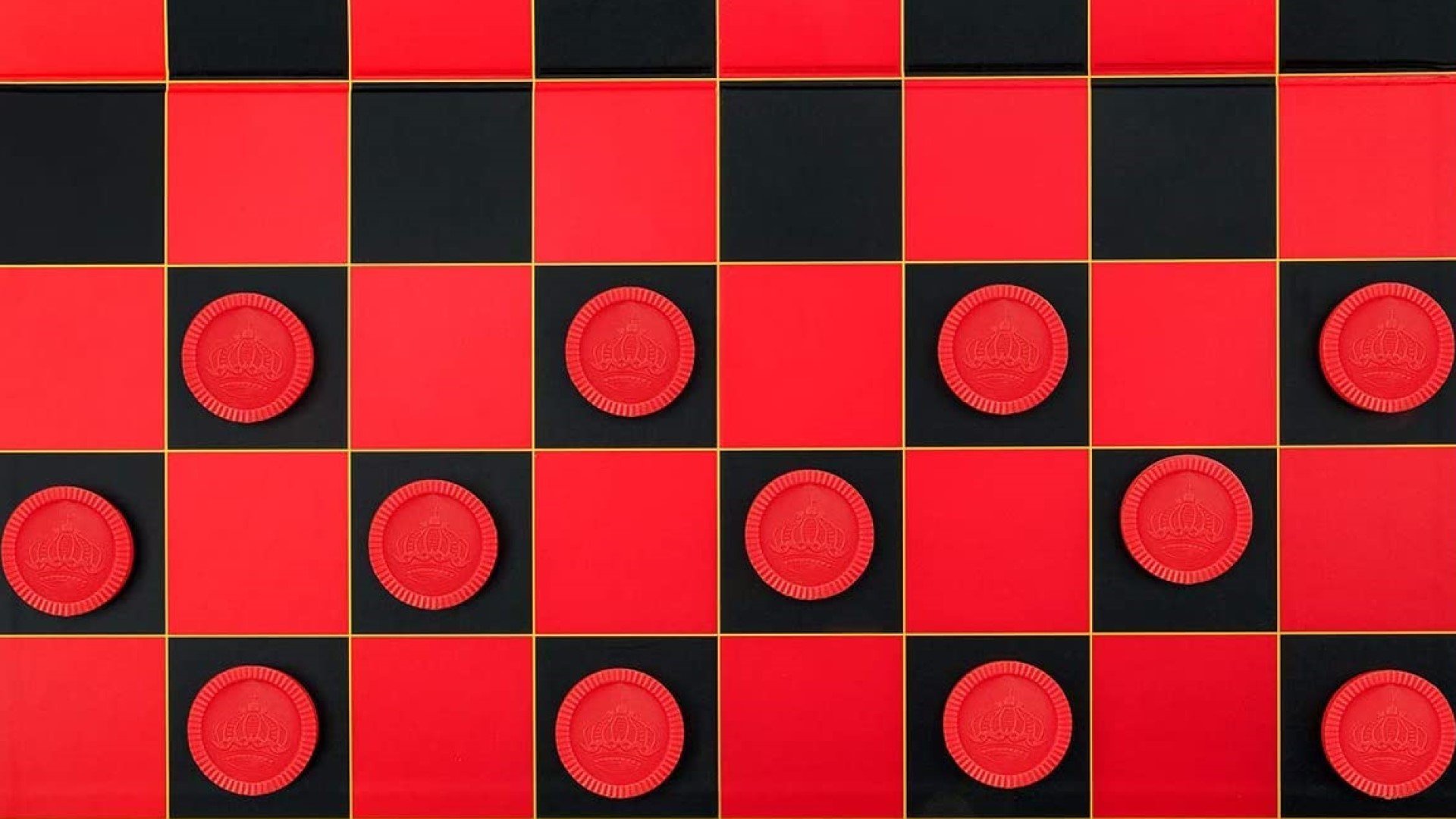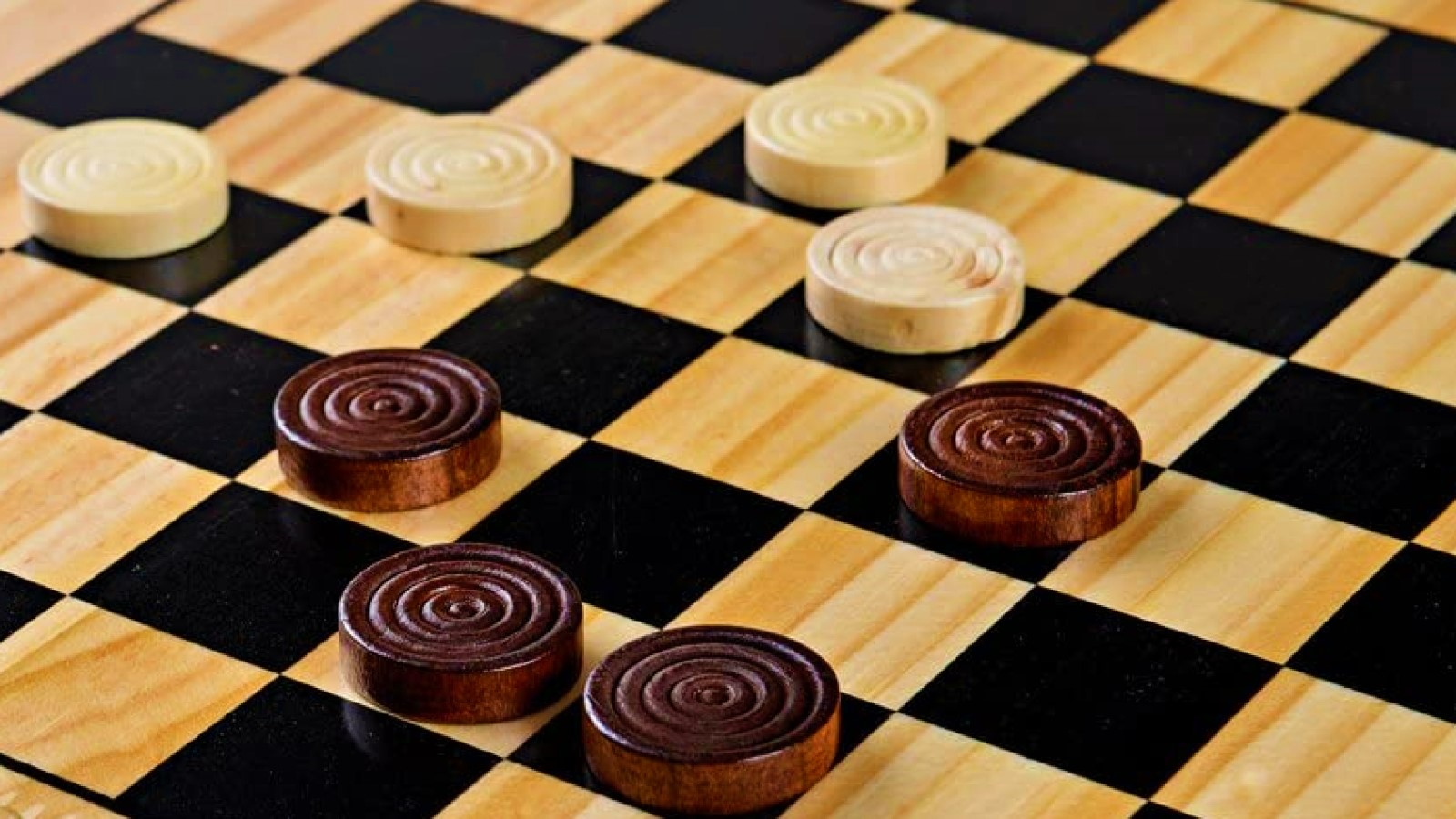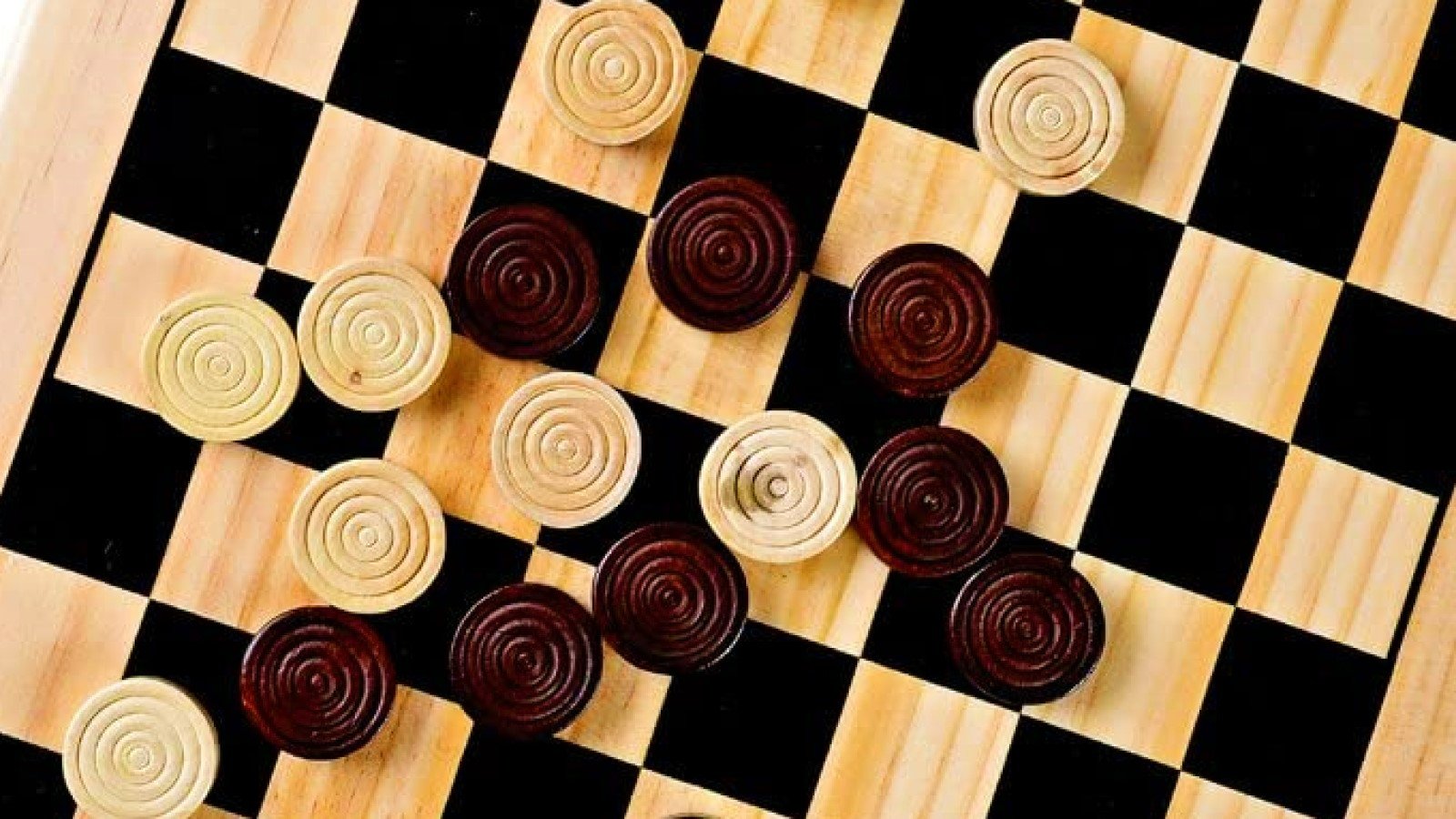Checkers (or draughts in the UK) is a classic tabletop game for a reason. Dating back over 5,000 years, checkers turns a simple eight by eight board into a brain-boggling black-and-white battlefield. Learning how to play checkers can be the first step towards more complex strategy games, as one match only takes around thirty minutes to play. Of course, you’ll need to know the answer to one question first: how do you play checkers?
We love modern strategy board games – you can tell by how many appear on our best board games lists, but these games can be intimidating if you’re relatively new to tabletop gaming. A classic board game like checkers ticks all the boxes that some complex games can’t – it’s a great family board game, an easy kids’ board game to pick up, and it still manages to a fun board game. Learning how to play checkers can be the stepping stone that future strategy lovers need.
This guide is designed to teach you how to play checkers, including everything from setup to winning strategies. It’s beginner-friendly, but people who’ve been playing since childhood may find a new tip or two, too. Here’s how to play checkers:
How to set up checkers
A typical checkerboard has 64 squares that alternate between a dark and light colour. To set up checkers, players should sit opposite each other with the board between them, and it’s traditional to have a light square in each player’s far-right corner. Choose who will play with dark and light pieces, then place your 12 pieces on the board – each player should have three rows of four, with the piece placed on the dark squares only.
A checkers tournament allows players five minutes to take their turn, so you should decide ahead of time whether you’ll time your moves or not. Whoever plays black typically starts the game.
How to play checkers
You only need to know a few core rules before you’ve learned how to play checkers, but they’re important. Firstly, your pieces can only move diagonally onto other black squares, one square at a time. They can also only move forward towards your opponent.
You can capture an opponent’s piece and remove it from the board if you can successfully ‘jump’ over their piece. This means that, if there is an opponent’s piece in a square you could usually move into and there’s an empty space diagonally behind it, your piece can move two spaces instead of one by ‘jumping’ over the piece – that’s when you take the captured piece out of play.
Generally, you must capture a piece if you’re able to do so on your turn. If two different pieces can potentially perform a jump, you can choose which piece you want to move on this turn. There’s also one more thing to consider. If landing a jump puts you in the position to capture another opposing piece, you must do so immediately – and you keep going until you can’t capture any more pieces. There are plenty of opportunities to stack up some epic capture combos this way.
If you manage to move a piece to the other end of the board (your opponent’s back row), you’ve managed to ‘king’ your piece. Congratulations! Place one of your pieces previously captured by your opponent on top of the ‘kinged’ piece to indicate its kingly status.
This piece can now move forward and backwards diagonally – it can still only move one space when it’s not capturing enemy pieces, though. One fun benefit of this new rule is that a kinged piece can move forward and backward in the same turn, so you could change direction to capture even more opposing pieces.
How to win checkers
There are two ways to win checkers. Either you capture all your opponent’s pieces, or you trap them in a position where they can’t make any legal moves.
When it comes to checkers strategies, playing aggressively is usually better than being defensive. It’s far better to try and control the middle of the board rather than stick to the edges in an attempt to avoid capture.
It also helps to move pieces as a group rather than push forward with a few individual pieces. Single pieces that stray too far from the group are far more vulnerable to capture, after all.
Knowing when to sacrifice a piece is also a vital part of winning. If your sacrifice allows you to create or protect a kinged piece, or you can capture at least two of your opponent’s pieces from this new position, it’s definitely worth losing a single piece. However, be careful not to lose too many pieces needlessly – you could create the path to kingship your opponent’s piece needs.
Kinged pieces should be a big priority. There’s no limit on how many pieces you can king, so you should get as many pieces across the board as possible. However, you should also be vigilant for any opposing pieces that may be edging closer to your end of the board. Knowing when to block your opponent will help keep them from creating more powerful pieces.
An effective way to block pieces is by leaving your back row of pieces in place for as long as possible. If they can’t reach any of the dark squares on your end of the board, that means no kinged pieces. Of course, they may do the same to you – in this case, it might be worth sacrificing a piece to tempt them into opening up a space for another piece that you can quickly king.
If your schtick is kicking ass at classic board games, you’ll probably want to know how to win Connect 4 or how to play chess. We’ve also got guides to the best playing card games, like the basic poker rules and how to play solitaire.
